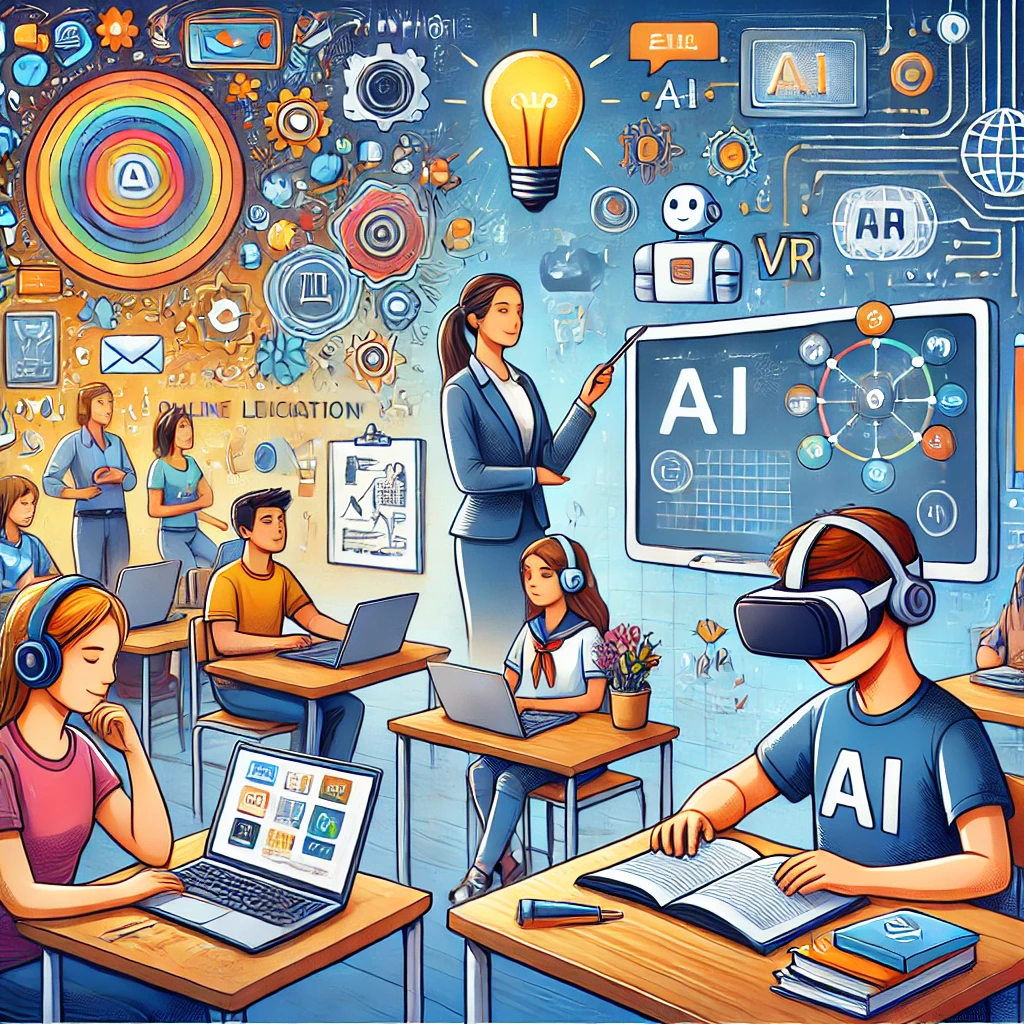The Role of Technology in Education: From Online Learning to AI Tutors

Technology has revolutionized virtually every aspect of modern life, and education is no exception. Over the past few decades, technological advancements have transformed how students learn, teachers instruct, and institutions operate. From online learning platforms to sophisticated AI-driven tutoring systems, technology is reshaping the educational landscape. This article explores the evolving role of technology in education, highlighting its benefits, challenges, and future prospects.
The Rise of Online Learning
1. The Growth of E-Learning Platforms
The proliferation of online learning platforms like Coursera, edX, and Khan Academy has made education more accessible than ever. These platforms offer courses from top universities and experts worldwide, allowing learners to acquire new skills at their own pace.
2. Benefits of Online Learning
- Flexibility: Students can learn anytime, anywhere, fitting education around their schedules.
- Diverse Course Selection: From coding to creative writing, learners have a vast array of subjects to explore.
- Cost-Effectiveness: Many online courses are free or significantly cheaper than traditional classroom courses.
- Self-Paced Learning: Students can review material as needed, ensuring better comprehension.
3. Challenges of Online Learning
While online learning offers many advantages, it also presents challenges:
- Lack of Face-to-Face Interaction: Some students miss the personal connection of traditional classrooms.
- Motivation and Discipline: Without structured schedules, some learners struggle to stay motivated.
- Digital Divide: Not everyone has access to reliable internet or devices.
AI Tutors: Personalized Learning at Scale
1. What Are AI Tutors?
AI tutors are computer programs that use artificial intelligence to provide personalized learning experiences. These systems analyze students’ strengths, weaknesses, and learning styles to tailor instruction accordingly.
2. How AI Tutors Enhance Learning
- Personalized Feedback: AI systems can provide instant, customized feedback to help students improve.
- Adaptive Learning Paths: AI adjusts the difficulty and content based on a student’s progress.
- 24/7 Availability: Unlike human tutors, AI tutors are always accessible.
- Data-Driven Insights: Teachers can use AI-generated data to identify areas where students need extra support.
3. Examples of AI in Education
- Duolingo: Uses AI to adapt language lessons to each learner’s proficiency.
- Socratic by Google: Offers AI-driven homework help by providing explanations and solutions.
- Carnegie Learning: Provides AI-powered math tutoring tailored to individual student needs.
Virtual and Augmented Reality in Classrooms
1. Virtual Reality (VR) for Immersive Learning
VR technology enables students to explore virtual environments, making learning more engaging and interactive. For example, history students can “visit” ancient civilizations, and biology classes can explore the human body in 3D.
2. Augmented Reality (AR) Applications
AR overlays digital information onto the real world, enhancing traditional learning materials. Apps like AR flashcards and interactive textbooks make learning more dynamic and engaging.
The Role of Technology in Collaborative Learning
1. Online Collaboration Tools
Platforms like Google Classroom, Microsoft Teams, and Zoom have become essential in facilitating group projects and discussions, especially during the COVID-19 pandemic.
2. Global Classroom Initiatives
Technology allows students to collaborate with peers worldwide, promoting cross-cultural understanding and communication skills.
Benefits of Technology in Education
1. Accessibility and Inclusion
Technology has opened doors for students with disabilities through tools like screen readers, speech-to-text programs, and customizable learning environments.
2. Engagement and Motivation
Interactive apps, gamified lessons, and multimedia content make learning more appealing and effective.
3. Real-World Skill Development
Tech-integrated education helps students develop essential skills like digital literacy, critical thinking, and problem-solving.
4. Resource Availability
Digital libraries, open educational resources, and online courses provide an abundance of learning materials.
Challenges and Considerations
1. Equity and the Digital Divide
Not all students have equal access to technology. Socioeconomic disparities can limit opportunities for some learners.
2. Privacy and Data Security
With the increased use of technology, protecting students’ personal information is crucial.
3. Overreliance on Technology
While technology is a valuable tool, it’s essential to maintain a balance and ensure that traditional teaching methods are not entirely replaced.
4. Teacher Training and Support
Educators need proper training to effectively integrate technology into their teaching practices.
The Future of Technology in Education
1. Artificial Intelligence and Machine Learning
AI is expected to become even more integrated into educational platforms, offering more sophisticated personalized learning experiences.
2. Blockchain for Credentialing
Blockchain technology could revolutionize how educational credentials are verified and shared.
3. Increased Use of VR and AR
As VR and AR technologies become more affordable, their use in classrooms is likely to expand.
4. Hybrid Learning Models
The future of education may combine the best of in-person and online learning to create more flexible and effective educational experiences.
Tips for Parents and Educators
1. Stay Informed: Keep up with technological trends and understand how they impact learning.
2. Encourage Responsible Tech Use: Teach students to use technology wisely and safely.
3. Promote Digital Literacy: Help students critically evaluate online information.
4. Maintain Balance: Ensure technology complements rather than dominates the learning experience.
5. Provide Support: Offer guidance and resources to help students navigate new technologies.
Conclusion
Technology is reshaping education in profound ways, offering opportunities for more personalized, accessible, and engaging learning experiences. While there are challenges to address, the potential benefits far outweigh the drawbacks. By embracing technology thoughtfully and responsibly, educators, parents, and students can harness its power to enhance learning and prepare for the future.
Stay connected with our website for more insights, educational resources, and the latest trends in technology and learning.